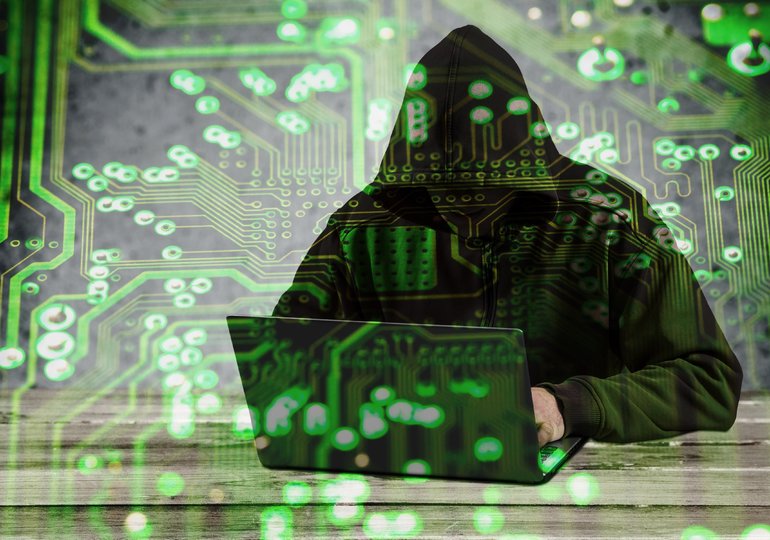The Office of Personnel Management announced last week that the personal data for 21.5 million people had been stolen. But for national security professionals and cybersecurity experts, the more troubling issue is the theft of 1.1 million fingerprints.
Much of their concern rests with the permanent nature of fingerprints and the uncertainty about just how the hackers intend to use them. Unlike a Social Security number, address, or password, fingerprints cannot be changed—once they are hacked, they're hacked for good. And government officials have less understanding about what adversaries could do or want to do with fingerprints, a knowledge gap that undergirds just how frightening many view the mass lifting of them from OPM.
"It's probably the biggest counterintelligence threat in my lifetime," said Jim Penrose, former chief of the Operational Discovery Center at the National Security Agency and now an executive vice president at the cybersecurity company Darktrace. "There's no situation we've had like this before, the compromise of our fingerprints. And it doesn't have any easy remedy or fix in the world of intelligence."
Though the idea of hacked fingerprints conjures up troubling scenarios gleaned from Hollywood's panoply of espionage capers, not much is currently known about those that OPM said were swiped in the data breach, which began last year and has been privately linked by officials to China. In fact, the agency said it didn't even know yet specifically which personnel have had their prints compromised.
"We do not have that information at this time," said Sam Schumach, an OPM spokesman, explaining that the agency is still assessing the breach and has not yet performed a "deep dive" into the data to assess whose fingerprints are now in the hands of hackers.
Questions also remain about what the ultimate goal of the OPM hackers is, and the administration so far continues to refuse to publicly blame China for the intrusion. Some have likened the breach to an enormous surveillance operation, one that Beijing conducted in order to build databases on the ins and out of the U.S. government and to potentially coerce, blackmail, or bribe officials into divulging closely guarded secrets.
Whatever the motives, the stolen fingerprints are viewed as a uniquely important and unprecedented data heist—one that could reap huge rewards for the hackers for decades to come.
"It's really horrifying, on so many levels," said Peter Singer, a strategist at the New America Foundation and a consultant for the military who just published a book, Ghost Fleet, that imagines what a cyber-heavy 21st-century war between the U.S., China, and Russia might look like. "This is different from the other breaches because this is a cyberattack that was not about intellectual-property theft. It was not about economic advantage of some sort. This is what we call preparing the battlefield."
Part of the worry, cybersecurity experts say, is that fingerprints are part of an exploding field of biometric data, which the government is increasingly getting in the business of collecting and storing. Fingerprints today are used to run background checks, verify identities at borders, and unlock smartphones, but the technology is expected to boom in the coming decades in both the public and private sectors.
"There's a big concern [with the OPM hack] not because of how much we're using fingerprints currently, but how we're going to expand using the technology in the next 5-10 years," said Robert Lee, cofounder of Dragos Security, which develops cybersecurity software.
Also problematic is that there is "no way to reissue a fingerprint," Lee said, meaning that once a set is in the hands of a foreign adversary they are vulnerable as long as that person is working in government.
That reality could create a squeeze on government for decades to come, as agencies may be forced to forgo fingerprints for things like two-factor authentication and instead rely on another biometric, such as facial recognition or iris scans. But those could also someday be hacked, as the OPM hack showed that just about anything stored in a government database can be up for grabs.
One thing seems clear: The fingerprints of most covert CIA spies working for the government are likely not affected, because the spy agency manages it own records apart from OPM. But the records for nearly every other executive agency, from the NSA to the FBI and anything housed under the Department of Defense, were laid bare during the hack. And some CIA agents who have previously worked elsewhere in government where they were required to submit a security-clearance form to OPM are also vulnerable.
One nightmare scenario envisioned by Ramesh Kesanupalli, an expert in biometrics, is that agents traveling across borders under aliases could be spotted for their true identities when their prints are scanned. Kesanupalli also warned that the fingerprints could end up somewhere on the black market, making biometrics a novel good to be trafficked on the Internet that could be useful to a buyer for decades.
For Kesanupalli, the hack may spur the government to start adopting other biometrics more quickly in lieu of the contaminated fingerprints, noting that iris scans are not as easily hackable as prints and harder to forge than facial scans, which can sometimes dupe cameras.
But fingerprints are likely only going to grow in importance for the government in the coming years, he said, and that is true for hackers, too.
"You never know down the line where we are going to use the fingerprints," Kesanupalli said.
Penrose, the former NSA official, also speculated that most of the stolen fingerprints were likely digital scans and not the older ink-based records, which may suggest that the bulk of the prints belong to active or recent employees. The broader breach affected all employees going back to 2000, OPM said.
"Jason Bourne would be in big trouble over this," Penrose said, referencing the fictional action-movie character played by Matt Damon. "Give him some new fingerprints."


0 comments:
Post a Comment